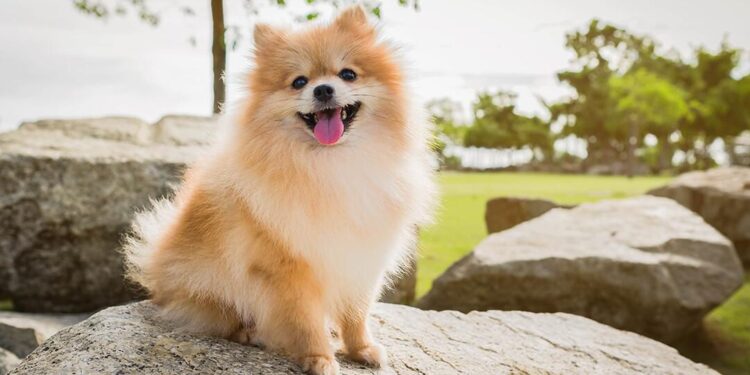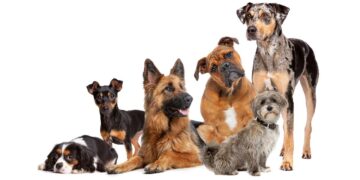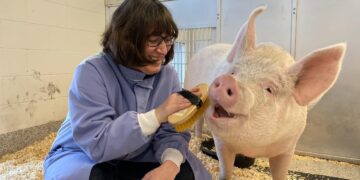Table of Contents
The Ghost of a Mismatched Pet
Leo arrived on a Tuesday, a whirlwind of black-and-white fur and boundless, kinetic energy.
He was, objectively, a beautiful dog—a Border Collie mix with one piercing blue eye and an intelligence that radiated from him like heat.
I had seen him online, fallen for the photograph, and convinced myself that his energy would be the perfect antidote to my long, quiet hours as a freelance strategist.
My 600-square-foot city apartment, I reasoned, would be a cozy sanctuary for us both.
I was wrong.
The first week was a blur of frantic walks and sleepless nights.
The second week, the baseboards began to disappear in a flurry of sawdust and guilt.1
By the end of the first month, my life had been completely colonized by his needs—needs I was failing spectacularly to meet.
My cozy sanctuary had become a pressure cooker of anxiety and destruction, a testament to a decision made with the heart but not with the head.
My story, I would later learn, is tragically common.
I had created a mismatch, an equation where my lifestyle and Leo’s fundamental nature could never balance.
This friction is the unseen force behind the heartbreaking statistics that haunt animal shelters across the country.
While we tell ourselves stories of unforeseen circumstances, the data reveals a pattern of predictable failure.
Behavioral issues are cited as a primary reason for relinquishment in up to 28% of cases, with hyperactivity, aggression, and house soiling topping the list.2
But what we call “behavioral problems” are often not problems at all; they are simply the animal’s innate traits expressing themselves in an environment that cannot contain them.4
Leo’s destruction wasn’t malice; it was the predictable outcome of a high-drive working dog confined to a small apartment for ten hours a day.2
The other top reasons for surrender—housing issues, cost, lack of time—are not isolated events but aftershocks of that initial, flawed choice.2
The decision to get a pet is one of the most significant we make, yet we often approach it with the emotional impulsivity of choosing a new coat.
We fall for a face in a shelter or a popular breed on social media, armed with good intentions but lacking a functional framework for what is, in essence, a decade-plus partnership.
The result is a preventable tragedy, a cycle of love, failure, and surrender that burdens our shelter systems and ends millions of lives prematurely.
My failure with Leo forced a painful but profound realization.
I didn’t need a “pet” in the abstract sense.
I needed a Keystone Companion.
In ecology, a keystone species is an organism that has a disproportionately positive effect on its environment, shaping the entire ecosystem for the better.
The right animal companion does the same for our lives, enhancing our well-being and bringing balance to our personal ecosystem.
The wrong one, as I learned with Leo, can cause the entire structure to collapse.
This is the new paradigm for choosing an animal companion: not a search for the “best pet,” but a deliberate, architectural process of finding the one that strengthens the very foundation of your life.
Part I: The Architecture of Heartbreak
The Anatomy of a Mismatch
The months with Leo were a masterclass in the slow erosion of joy.
My life, once my own, was now dictated by a constant, low-grade panic.
Leaving for work meant bracing for what I might find upon my return—another cushion eviscerated, another frantic note from a neighbor about the barking.6
This wasn’t just an inconvenience; it was a profound source of stress that bled into every corner of my existence.
The “cost of pet maintenance,” a sterile line item in shelter relinquishment data, became devastatingly real.2
It wasn’t the price of dog food; it was the emergency vet bill after he ingested part of a wall, the professional carpet cleaning fees, and the succession of expensive, “indestructible” toys that he would dismantle in minutes.1
My social life withered.
Friends stopped suggesting spontaneous dinners, knowing I couldn’t leave him.
The anxiety of his separation distress was a constant companion.6
This personal experience is a microcosm of the data.
The “owner having personal problems” or “no time for pet” categories, which account for a significant portion of surrenders, are not moral failings but often the direct consequence of a mismatch that demands more time, energy, and emotional bandwidth than the owner ever anticipated.2
My landlord’s final warning, which cited noise complaints, would have been statistically logged under “landlord not allowing pet,” but the root cause was not the landlord; it was the predictable vocalization of a bored, under-stimulated, and anxious working dog—a dog I had unwittingly set up to fail.7
The Ripple Effect: Beyond “Bad Behavior”
The most insidious aspect of a pet-owner mismatch is how it creates cascading failures.
The initial poor choice acts as a fault line, triggering a series of seismic shocks that destabilize an owner’s life.
A close examination of relinquishment data reveals that the reasons are not discrete but deeply interconnected.
An owner, charmed by a breed’s appearance, brings home a high-energy dog without considering their sedentary lifestyle.5
This initial error in judgment directly leads to what is labeled “Behavioral Issues”—the dog, lacking an outlet for its innate drive, begins chewing, barking, or exhibiting anxiety.3
These behaviors, in turn, trigger “Housing/Moving” crises.
Neighbor complaints escalate, landlords issue ultimatums, and the owner is forced to choose between their home and their P.T.6
Simultaneously, the attempt to manage these behaviors creates unforeseen “Financial” strain.
The cost of hiring trainers, replacing destroyed property, or paying for veterinary care for stress-induced ailments can become overwhelming.2
The sheer effort required to manage a struggling animal creates “Time Constraints” that weren’t factored into the initial decision.8
This chain reaction is a quiet tragedy playing out in homes everywhere.
It is the story of the family who must surrender their beloved dog after he becomes aggressive towards their toddler, a devastating outcome that could stem from a mismatch in temperament and energy from the very beginning.10
It is the heartbreak of the owner who has to rehome a dog because a new job or a divorce makes it impossible to meet its extensive exercise needs—a crisis that a more compatible, lower-maintenance animal might have weathered with ease.11
By focusing only on the final reason for surrender, we miss the critical lesson: the foundation was flawed from the start.
The heartbreak was not an accident; it was an architectural inevitability.
Part II: The Blueprint Epiphany: Discovering the Keystone Companion
The decision to rehome Leo was one of the most difficult of my life.
It was a surrender in every sense of the word, an admission of my own profound failure.
The guilt was immense, a heavy cloak I wore for months.12
I had taken on a responsibility and failed, not just myself, but him.
I arranged for him to go to a family friend’s farm, a sprawling property with acres to run, other dogs to play with, and a job herding sheep.
It was, for him, a paradise.
For me, it was a reckoning.
In the quiet, empty apartment that followed, the epiphany arrived not as a lightning bolt, but as a slow, dawning clarity.
The problem wasn’t Leo.
He was a perfect Border Collie.
The problem wasn’t even, fundamentally, me.
I was a person with a good heart who wanted to provide a loving home.
The problem was my process.
I had been asking the wrong question entirely.
The question is not, “What is the best pet?” It is, “What is the architecture of my life, and what kind of companion would not just fit into it, but make the entire structure stronger?”
This was the birth of the Keystone Companion framework.
The analogy from ecology became my guiding principle.
A keystone species, like a sea otter in a kelp forest, is not necessarily the largest or most numerous, but its presence is critical to the health, stability, and diversity of its entire ecosystem.
It maintains balance.
A Keystone Companion must function in the same way within your personal ecosystem—the complex, interconnected web of your home, your finances, your mental and physical health, your social life, and your daily rhythms.
This framework represents a paradigm shift.
It moves the selection process away from a consumerist model based on aesthetics or fleeting emotion (“I want that cute one!”) and toward a relational model based on deep compatibility and mutual well-being.
The goal is no longer to simply acquire a pet, but to forge a partnership.
It requires a radical honesty about your own limitations and capacities.
The objective is to find an animal whose innate needs you can not only meet but exceed, and whose presence, in turn, enriches and stabilizes your own life.
This is the core principle that veterinarians and animal behaviorists have advocated for years: a successful human-animal bond is built not on love alone, but on a foundation of realistic expectations and lifestyle compatibility.3
Part III: The Master Plan: A Lifestyle-First Guide to Finding Your Match
This is the practical application of the Keystone framework.
It is a systematic process for deconstructing your life and using that blueprint to identify your ideal animal partner.
It is divided into three phases: surveying your landscape, drafting the blueprints, and conducting the final walk-through.
Phase 1: Surveying Your Own Landscape (A Lifestyle Audit)
Before you even browse a single photo of a puppy or kitten, you must conduct a thorough and brutally honest audit of your own life.
This self-assessment is the most critical step in preventing a mismatch.14
Your Habitat (Space & Environment)
Your physical space dictates the realm of possibility.
- Dwelling Type: Do you live in a 500-square-foot studio apartment or a 3,000-square-foot house with a yard? High-energy, large-breed dogs may struggle without a yard, while cats, fish, and small mammals are perfectly suited for apartment life.18
- Outdoor Space: If you have a yard, is it securely fenced? A high fence is crucial for sighthounds or dogs known for their jumping ability.20
- Location: A suburban or rural setting offers different opportunities for exercise than a dense urban environment. A city dweller must be committed to leash walks and dog park visits, while a country dweller might offer more off-leash freedom.17
- Rules & Regulations: Check your lease, HOA, or condo association rules. Many have strict limits on pet size, breed, or even species. This single factor can immediately narrow your options.14
Your Rhythm (Time & Energy)
This is where good intentions often collide with reality.
- Daily Schedule: How many hours are you away from home for work each day? Do you travel frequently? A pet that requires constant companionship, like many parrots or a single budgie, would suffer in a home that is empty for long stretches.8 An independent cat or a reptile might be a better fit.23
- Activity Level: Be honest. Are you an active person who hikes every weekend, or is your ideal evening spent on the couch? Matching your energy level to a pet’s is paramount. A high-energy dog like a Border Collie or Jack Russell Terrier needs a “job” or extensive exercise to prevent destructive behavior.4 A low-energy breed like a Basset Hound or an English Bulldog would be a much better match for a quieter lifestyle.26
Your Resources (Finances)
Love is free, but veterinary care, food, and supplies are not.
Underestimating the financial commitment is a leading cause of pet relinquishment.3
A pet is not a one-time purchase; it is an ongoing financial responsibility for its entire life.
| The True Cost of Companionship: A Financial Snapshot |
| Pet Type |
| Dog (Medium) |
| Cat |
| Rabbit |
| Bearded Dragon |
| Small Bird (Budgie) |
| Freshwater Fish (Betta) |
| Freshwater Fish (Goldfish) |
Your Social Ecosystem
A pet enters a pre-existing social dynamic.
- Household Members: Do you have young children? A fragile toy dog or a rabbit that dislikes being held might not be a good fit. A sturdy, patient Labrador Retriever or a social guinea pig could be ideal.42 Do you have roommates? Their allergies and consent are critical factors.
- Existing Pets: Introducing a new animal requires careful consideration and a slow, managed process. A dog with a high prey drive is a risky choice for a home with cats or rabbits.15
- Future Plans: A pet is a long-term commitment. A hamster may live for 2-3 years, but a cat can live for 18, a dog for 15, and some parrots can outlive you, with lifespans exceeding 80 years.45 Consider how potential life changes—a new baby, a move overseas, a change in relationship status—will impact your ability to care for that animal for its entire life.2
Phase 2: Drafting the Blueprints (Exploring the Animal Kingdom)
With a clear blueprint of your life, you can now begin to explore which animals are a structural match.
This phase is about identifying categories of companions whose needs align with your audited lifestyle.
| The Keystone Companion Matcher |
| Your Lifestyle Profile |
| The Active Adventurer (Loves hiking, running; has a yard) |
| The Busy Urban Professional (Long work hours, small apartment) |
| The Quiet Homebody (Prefers relaxing at home, stable routine) |
| The Growing Family with Young Kids (Active, sometimes chaotic home) |
| The First-Time Owner Seeking Low Maintenance |
Detailed Breakdowns by Pet Category
Canine Cohorts (Dogs)
The sheer diversity of dogs makes them adaptable to many lifestyles, but it also makes a mismatch highly probable if you don’t do your research.
- The Energy Equation: This is the single most important factor. High-energy breeds like Border Collies, Australian Shepherds, and Jack Russell Terriers were bred for work. They require 1-2+ hours of vigorous exercise and mental stimulation daily. Without it, they can develop behavioral issues.4 In contrast, low-energy breeds like Basset Hounds, English Bulldogs, and even Greyhounds (who are sprinters, not marathoners) are content with shorter walks and more time lounging.26
- Temperament & Trainability: Breeds have distinct personalities. Akitas are loyal but independent and can be wary of strangers and other dogs, requiring an experienced owner.49 Labrador Retrievers are famously eager to please and social, making them a popular family choice.53 Understanding these innate temperaments is key to a harmonious relationship.54
Feline Counterparts (Cats)
Cats are often seen as a monolithically “low-maintenance” option, but their social and care needs vary dramatically by breed.
- The Social Spectrum: If you’re away from home often, an independent breed like a Persian or Russian Blue, who is content with their own company, is an excellent choice.23 However, highly social breeds like the Siamese or Sphynx crave interaction and can become stressed or destructive if left alone too long. They are “talkative” and demanding companions.23
- Grooming and Care: The long, luxurious coat of a Persian requires daily grooming to prevent matting, a significant time commitment. A Domestic Shorthair, by contrast, needs minimal grooming.15
The Contained Kingdom (Small Mammals, Reptiles, Birds, Fish)
These pets are often chosen for smaller living spaces, but their needs are no less complex.
- Small Mammals:
- Rabbits: These are not the cuddly, easy pets many assume. Most rabbits dislike being held or picked up.43 They are highly social and thrive when kept in bonded pairs, which requires a careful, slow introduction process.29 With a lifespan of 8-12 years, they are a long-term commitment.45
- Guinea Pigs: Exceptionally social and docile, guinea pigs are one of the few small mammals that genuinely enjoy gentle handling and interaction.44 They are so social that they
must be kept with at least one other guinea pig to prevent loneliness and stress.48 They communicate with a charming array of whistles and purrs.58 - Reptiles:
- Bearded Dragons: Known for their docile and calm temperament, “beardies” are one of the best reptiles for handling.60 However, their care is technical. They require a large enclosure with a precise temperature gradient and specific UVB lighting to synthesize vitamin D3 and prevent metabolic bone disease—a significant initial and ongoing expense.62
- Leopard Geckos: These small, nocturnal lizards are a great choice for those who want a fascinating pet to observe rather than handle frequently. They are generally docile but can be stressed by excessive handling and may drop their tails if frightened.24
- Birds:
- Budgies & Cockatiels: These intelligent, social parrots have immense needs for interaction. A single bird will bond intensely with its owner and require several hours of direct attention each day to stay mentally healthy.65 Keeping them in pairs can help meet their social needs, but they will still require interaction and enrichment.68 Their potential for noise and long lifespans (a cockatiel can live 16-25 years) must be considered.18
- Fish:
- Betta Fish: The myth of the betta in a tiny bowl is a harmful one. To thrive, a betta requires a filtered, heated aquarium of at least 5 gallons.37 They are territorial and males must be kept alone. While not a “cuddly” pet, their vibrant colors and interactive personalities make them rewarding for those who appreciate aquatic life.50
- Goldfish: Perhaps the most misunderstood pet, the common goldfish is not a short-lived, disposable creature. With proper care, they can live for over 30 years and grow to be over a foot long.40 This requires a very large tank (a common rule is 20 gallons for the first fish and 10-20 for each additional) with powerful filtration to handle their high waste output.41 They are a massive commitment disguised as a beginner pet.
Phase 3: The Final Walk-Through (The Selection Process)
Once your research has pointed you toward a specific species and breed, the final phase is about choosing an individual.
- Adoption vs. Breeder: Adopting from a shelter or rescue organization is a noble choice that saves a life. A significant advantage is the ability to adopt an adult animal whose size, energy level, and personality are already fully developed, removing much of the guesswork.42 Reputable breeders provide predictability in terms of health and temperament but require thorough vetting to avoid unethical operations.70
- Shelter Protocol: When you visit a shelter, you are not just choosing a pet; you are conducting an interview. Armed with your lifestyle audit, ask the adoption counselors specific, targeted questions: What is this dog’s energy level on a scale of 1 to 10? How does this cat react to being left alone? What is this animal’s known history with children or other pets? Their knowledge is an invaluable resource.20
- Assessing the Individual: Observe the animal in its kennel and, if possible, in a quieter meeting room. Look for signs of a balanced temperament: curiosity, a willingness to approach, and a relaxed body posture. Be cautious of animals that are extremely fearful (hiding, trembling) or show signs of aggression (growling, snapping, hissing).15 While many of these behaviors are stress-induced by the shelter environment, they can indicate a need for more experienced handling and rehabilitation than a first-time owner can provide.
Conclusion: A Life, Redesigned
After Leo, my apartment remained quiet for over a year.
I used that time not to mourn, but to study the blueprints of my own life.
I audited my quiet habits, my long workdays, my small space, and my need for a calming, low-maintenance presence.
When I was finally ready, I didn’t look for another dog.
I went to a local rescue and asked to meet their calmest, most independent adult cats.
That’s how I found Marcus, a seven-year-old British Shorthair with grey fur and amber eyes.
He had been surrendered when his elderly owner passed away.
He asked for nothing but a soft place to sleep, a full food bowl, and the occasional scratch behind the ears.
He doesn’t destroy the baseboards; he naps in sunbeams.
He doesn’t bark when I leave; he greets me with a silent, dignified head-butt when I return.
He is not an addition to my life; he is an integral part of its architecture.
He is my Keystone Companion.
He doesn’t demand that I change my ecosystem to suit him; his very presence makes that ecosystem healthier, calmer, and more complete.
A pet is not an accessory.
It is a fundamental redesign of your life, a commitment that spans years and demands resources of time, money, and heart.
By abandoning the impulsive search for a “pet” and embracing the deliberate, thoughtful process of designing a partnership, you do more than just avoid the heartbreak of a mismatch.
You commission a new, more vibrant, and more resilient architecture for your own happiness.
Stop searching for a pet. Start designing a partnership.
Works cited
- Pet owners who regret getting your pet, what’s your story? : r/AskReddit, accessed August 16, 2025, https://www.reddit.com/r/AskReddit/comments/aw8ojg/pet_owners_who_regret_getting_your_pet_whats_your/
- Human and Animal Factors Related to the Relinquishment of Dogs and Cats in 12 Selected Animal Shelters in the United States, accessed August 16, 2025, https://www.naiaonline.org/uploads/WhitePapers/RelinquishedAnimals.pdf
- Investigating the Reasons behind Companion Animal …, accessed August 16, 2025, https://pmc.ncbi.nlm.nih.gov/articles/PMC11394480/
- High Energy Dog Breeds: The Potential Contenders – Off Leash K9 Training of Lubbock, TX, accessed August 16, 2025, https://lubbockdogtraining.com/high-energy-dog-breeds/
- It’s A Dog’s Life-When Owners And Dogs Are Mismatched – The Newtown Bee, accessed August 16, 2025, https://www.newtownbee.com/02272009/its-a-dogs-life-when-owners-and-dogs-are-mismatched/
- [discussion] What are the challenges of having a dog? – Reddit, accessed August 16, 2025, https://www.reddit.com/r/dogs/comments/bjdro8/discussion_what_are_the_challenges_of_having_a_dog/
- Association of Socioeconomic Status and Reasons for Companion Animal Relinquishment, accessed August 16, 2025, https://www.mdpi.com/2076-2615/14/17/2549
- Overcoming 10 Unspoken Challenges of New Pet Ownership, accessed August 16, 2025, https://www.funkybunchpetcare.com/blog/overcoming-unspoken-challenges-of-new-dog-ownership
- What pet best fits my home and lifestyle? – Animal Kingdom | Puppies N Love, accessed August 16, 2025, https://www.animalkingdomaz.com/about-us/choosing-the-proper-pet/what-pet-best-fits-my-home-and-lifestyle/
- I had to surrender my dog : r/Petloss – Reddit, accessed August 16, 2025, https://www.reddit.com/r/Petloss/comments/1gw6j8k/i_had_to_surrender_my_dog/
- Has anyone had to give up a family pet due to a difficult situation? – Reddit, accessed August 16, 2025, https://www.reddit.com/r/Pets/comments/16ejcpf/has_anyone_had_to_give_up_a_family_pet_due_to_a/
- Often, Rehoming a Dog Gives the Best Home – Whole Dog Journal, accessed August 16, 2025, https://www.whole-dog-journal.com/blog/often-a-rehomed-home-is-the-best-home/
- What Was I thinking? (Rescue Regrets are Usually Temporary) – The Other End of the Leash, accessed August 16, 2025, https://www.patriciamcconnell.com/theotherendoftheleash/what-was-i-thinking-rescue-regrets-are-usually-temporary
- Selecting a pet for your family | American Veterinary Medical …, accessed August 16, 2025, https://www.avma.org/resources-tools/pet-owners/petcare/selecting-pet-your-family
- Behavior Management – Pet Selection Guidelines | VCA Animal …, accessed August 16, 2025, https://vcahospitals.com/know-your-pet/behavior-management—pet-selection-guidelines
- Choosing a Pet: 7 Steps to Picking Your Perfect Fur-Ever Friend – Valley Animal Hospital, accessed August 16, 2025, https://valleyanimal.net/tips/7-steps-to-choosing-a-pet/
- Tips for Picking a Pet Who’s Right for Your Lifestyle – Best Friends Animal Society, accessed August 16, 2025, https://bestfriends.org/pet-care-resources/tips-picking-pet-whos-right-your-lifestyle
- The 10 Best Pets for Apartment Living | Rent. Blog, accessed August 16, 2025, https://www.rent.com/blog/best-pets-for-apartments/
- The Best Pets to Adopt for Apartment Living – Healthy Pet, accessed August 16, 2025, https://www.healthy-pet.com/blogs/blog/the-best-pets-to-adopt-for-apartment-living
- How To Adopt – The Humane Society for Tacoma & Pierce County, accessed August 16, 2025, https://www.thehumanesociety.org/adopt/how-to-adopt/
- Selecting a Pet Dog | American Veterinary Medical Association, accessed August 16, 2025, https://www.avma.org/resources/pet-owners/petcare/selecting-pet-dog
- The Real Cost of Owning a Parrot, accessed August 16, 2025, https://valleywideparrotrescue.com/2023/08/08/the-real-cost-of-owning-a-parrot/
- The Cat Personality Awards: The Unique Temperaments of Popular Cat Breeds – IAMS, accessed August 16, 2025, https://www.iams.com/cat/cat-articles/cat-personality-awards-unique-temperaments-popular-cat-breeds
- Leopard Gecko Care Sheet – PetMD, accessed August 16, 2025, https://www.petmd.com/reptile/leopard-gecko-care-sheet
- High Energy vs. Low Energy Dog Breeds – Wholesomes Pet Food, accessed August 16, 2025, https://wholesomespetfood.com/high-energy-vs-low-energy-dog-breeds-finding-your-perfect-match/
- 13 Low-Energy Dog Breeds – PetMD, accessed August 16, 2025, https://www.petmd.com/dog/general-health/low-energy-dog-breeds
- Rabbit Basic Science – PMC – PubMed Central, accessed August 16, 2025, https://pmc.ncbi.nlm.nih.gov/articles/PMC7158370/
- Betta Fish Care – How to Take Care of a Betta | Bettafish.org, accessed August 16, 2025, https://bettafish.org/care/
- Care Guide for Betta Fish – The Best Beginner Pet Fish – Aquarium Co-Op, accessed August 16, 2025, https://www.aquariumcoop.com/blogs/aquarium/betta-fish-care-guide
- Goldfish Care Sheet – PetMD, accessed August 16, 2025, https://www.petmd.com/fish/goldfish-care-sheet
- Goldfish Care Guide – Aqueon, accessed August 16, 2025, https://www.aqueon.com/resources/care-guides/goldfish
- Selecting a Dog – Dog Owners – Merck Veterinary Manual, accessed August 16, 2025, https://www.merckvetmanual.com/dog-owners/selecting-and-providing-a-home-for-a-dog/selecting-a-dog
- care-sheet-rabbit.pdf – Seattle.gov, accessed August 16, 2025, https://www.seattle.gov/documents/Departments/AnimalShelter/care-guides/care-sheet-rabbit.pdf
- Why Guinea Pigs Are Great | Animal Welfare Society, accessed August 16, 2025, https://animalwelfaresociety.org/pet-of-the-week/why-guinea-pigs-are-great/
- A pet’s life expectancy – How long do pets live for? – Post Office, accessed August 16, 2025, https://www.postoffice.co.uk/pet-insurance/guides/how-long-do-pets-live-for
- What is your pet’s life expectancy? | Vancouver Vets, accessed August 16, 2025, https://www.mtviewvet.com/site/blog/2022/06/21/pet-life-expectancy
- Housing and husbandry: Guinea pig – NC3Rs, accessed August 16, 2025, https://nc3rs.org.uk/3rs-resources/housing-and-husbandry-guinea-pig
- Dog Breeds – Types Of Dogs – American Kennel Club, accessed August 16, 2025, https://www.akc.org/dog-breeds/
- Betta Fish Care Sheet – PetMD, accessed August 16, 2025, https://www.petmd.com/fish/betta-fish-care-sheet
- What Dog Breed Has the Best Temperament? – AAA State of Play, accessed August 16, 2025, https://www.aaastateofplay.com/what-dog-breed-has-the-best-temperament/
- How to Choose a Dog Breed Based on Your Lifestyle – Wisdom Panel, accessed August 16, 2025, https://www.wisdompanel.com/en-us/blog/best-dog-breed
- Ten Popular Cat Breeds and Their Personalities | Animal Care …, accessed August 16, 2025, https://www.animalcarectr.com/blog/ten-popular-cat-breeds-and-their-personalities
- Close Encounters of the Furry Kind: Understanding Your First Rabbit, accessed August 16, 2025, https://web.as.miami.edu/hare/firstrabbit.html
- Does My Rabbit Need a Friend? – A HOME FOR EVERYBUNNY, accessed August 16, 2025, https://www.iowarabbitrescue.org/does-my-rabbit-need-a-friend.html
- Guinea Pig Behavior – The Anti-Cruelty Society, accessed August 16, 2025, https://anticruelty.org/pet-library/guinea-pig-behavior
- Guinea pig behaviour – RSPCA, accessed August 16, 2025, https://www.rspca.org.uk/adviceandwelfare/pets/rodents/guineapigs/behaviour
- What to Know About Bearded Dragons – WebMD, accessed August 16, 2025, https://www.webmd.com/pets/what-to-know-about-bearded-dragons
- Keeping Bearded Dragons as Pets – Dog Breed Info, accessed August 16, 2025, https://www.dogbreedinfo.com/pets/beardeddragon.htm
- CARING FOR YOUR LIZARD – Pet Advocacy Network, accessed August 16, 2025, https://petadvocacy.org/wp-content/uploads/2022/01/Lizard-Care-Sheet.pdf
- A Guide to Caring for Bearded Dragons as Pets – The Spruce Pets, accessed August 16, 2025, https://www.thesprucepets.com/bearded-dragons-as-pets-1236896
- What to Know About Leopard Geckos – WebMD, accessed August 16, 2025, https://www.webmd.com/pets/what-to-know-about-leopard-geckos
- Do Budgies Need a Buddy? Pros and Cons of Pairing Birds – Richmond Veterinary Clinic, accessed August 16, 2025, https://rvetclinic.com/do-budgies-need-a-buddy-the-truth-about-social-birds/
- Do Budgies Need a Buddy? The Truth About Social Birds [2025] – Valley Animal Hospital, accessed August 16, 2025, https://thevalleyanimalhospital.com/do-budgies-need-a-buddy-the-truth-about-social-birds/
- 5 Special Things Cockatiels Do ONLY for Their Favorite Person! – YouTube, accessed August 16, 2025, https://www.youtube.com/watch?v=iYRcEqwB54Y
- Do Budgies Need a Buddy in 2025? Benefits of Pairing Your Pet – Companion Animal Hospital, accessed August 16, 2025, https://liveoakvet.com/2023/11/01/do-budgies-need-a-buddy-the-truth-about-social-birds/
- How To Take Care of Goldfish – PetMD, accessed August 16, 2025, https://www.petmd.com/fish/care/how-to-take-care-of-goldfish
- Guidelines for Selecting a Pet – Kittel Family Veterinary Practice, accessed August 16, 2025, https://kittelfamilyvet.com/99666-guidelines-for-selecting-a-pet/
- Adoption Process – Wisconsin Humane Society, accessed August 16, 2025, https://www.wihumane.org/adopt/adoption-process






